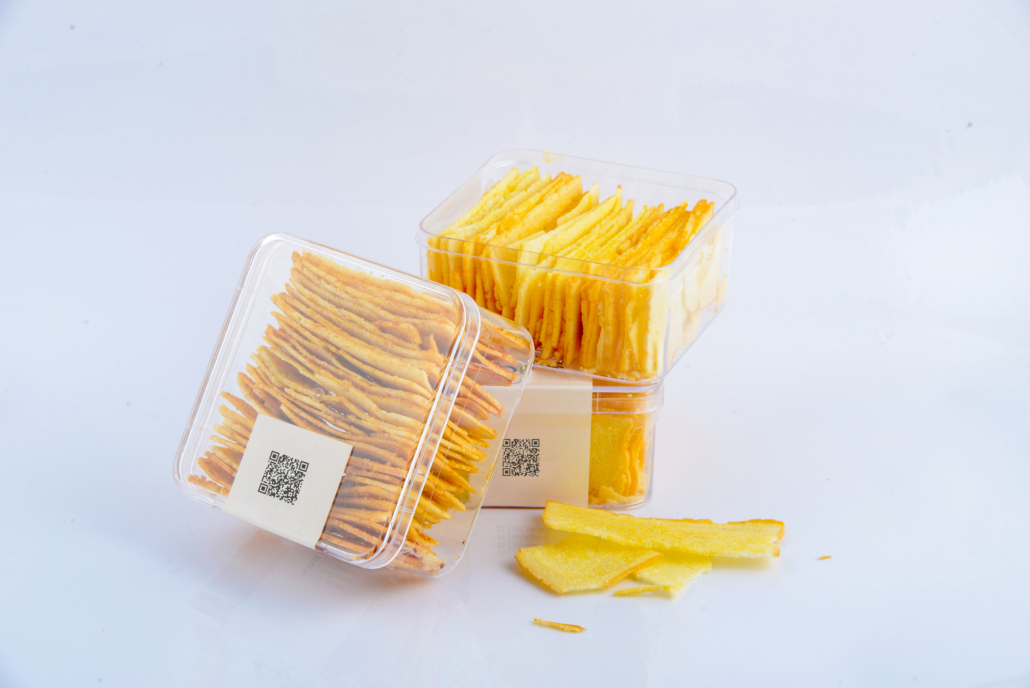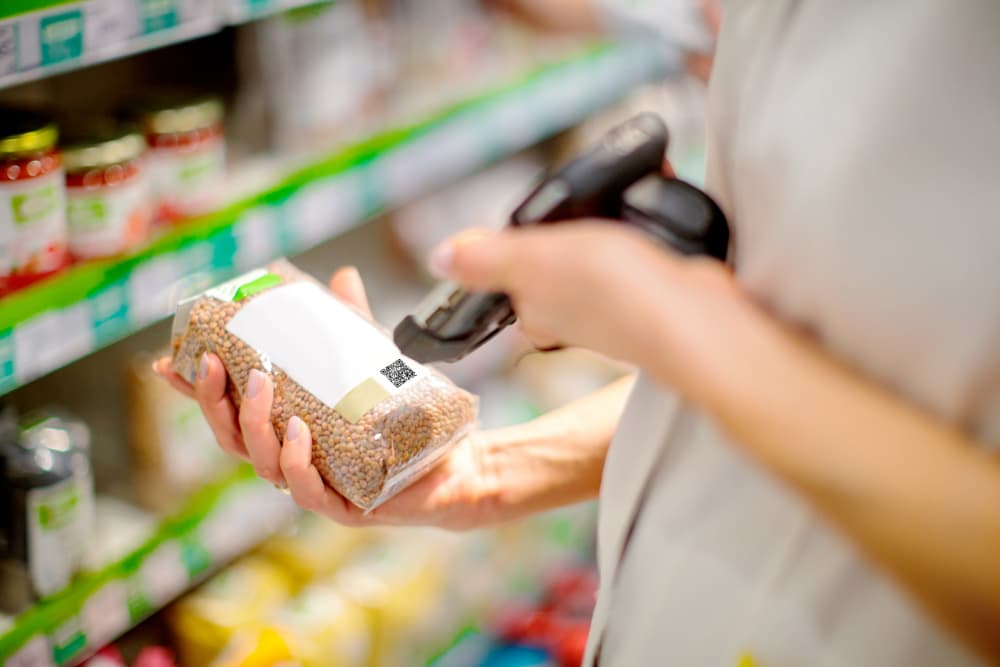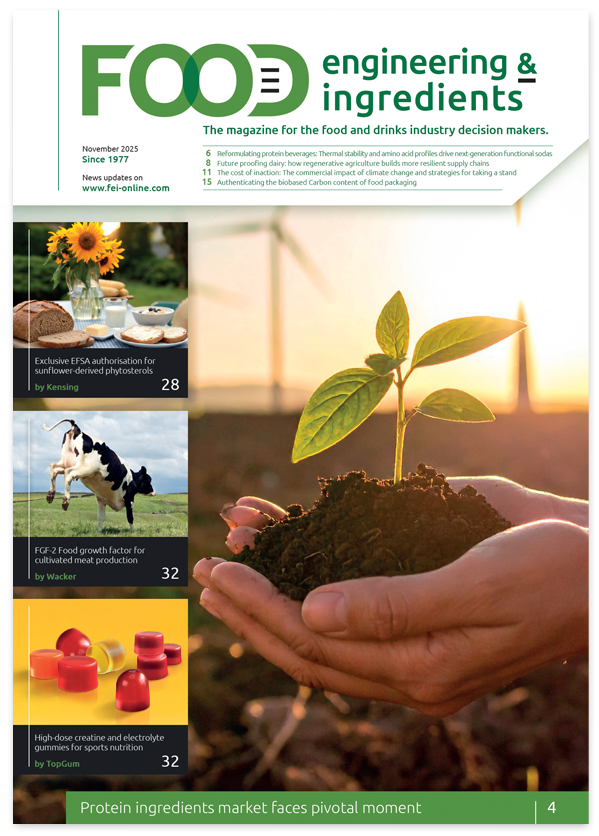How QR codes can help brands seize the opportunity for next-gen, personalised marketing
Viktor Hermansson, Markem-Imaje’s Marketing Director, reveals how GS1 Digital Link QR codes enable brands to enhance consumer engagement through sophisticated first-party data collection. As digital trust erodes – with 52% of consumers encountering misinformation – 2D barcodes offer authenticated communication channels that bridge physical products with personalised digital experiences. The technology unlocks strategic advantages: supply chain transparency, real-time crisis management, and behavioural analytics that inform targeted marketing strategies ahead of the 2027 regulatory transition.

Viktor Hermansson, Markem-Imaje’s Marketing Director
In 2025, genuine brand and consumer engagement are crucial. In the modern, fast-moving world of digital transformation, AI and social media, consumers can often be bombarded with all the noise, and sometimes, less is more. McKinsey’s article, State of the Consumer 2025: When disruption becomes permanent, illustrates how consumers are seeking authenticity and trust more than ever before, making getting even closer to the shopper imperative for brands. McKinsey’s insights uncover that: “Digital channels win users but not their trust.”
Further to this, Accenture’s 2025 Life Trends report homes in on the consumer data for brands. It highlights that 52% of respondents have seen fake news or articles, and 39% have seen fraudulent product reviews online. The study also illustrates why “customer obsession is the best growth strategy,” and underscores how vital the consumer experience is, especially when it comes to digital interactions. There are five clear trends:
- Cost of hesitations – this covers how the lines are now blurred between authentic and deceptive content today; it’s hard for consumers to tell what is real, which leads to cautious digital interactions.
- The parent trap – the evolving digital transformation reveals how people want options for guiding younger generations, to help them forge healthy future bonds with technology.
- Impatience economy – highlights the ways consumers are finding quick solutions through online content to achieve their life goals.
- The dignity of work – this illustrates how this is being challenged. As people are introduced to recent technologies at work, it’s about whether they will welcome them or not.
- Social rewilding – because of the all-consuming digital world, people are harking back to simplicity and more meaningful connections.
For brands, real communication with the consumer is key. According to Grand View Research: “The global consumer packaging market size is anticipated to reach US$822.74 billion by 2030, registering a CAGR of 3.7% from 2025 to 2030. The market is primarily driven by evolving consumer preferences and behaviours.”
How can brands successfully connect with their consumers? Creating genuine digital experiences and building trust online are pivotal. This is where GS1 Digital Link barcodes come into play. Implementing such QR codes, or 2D barcodes, can help to bolster authentic communication between brands and consumers in a multitude of ways – cementing the consumer’s connection to the brand.
Dynamic 2D barcodes
What are 2D barcodes? Also known as QR codes, 2D barcodes store data vertically and horizontally, therefore expanding the information capacity when compared to standard UPC (1D) barcodes, which are generally used for point of sale (POS) handling. A global organisation for data compliance, GS1, has shared a standardised model for encoding key product details. Granular information like brand and product data, interactive website links and experiences can now be contained within a 2D barcode (GS1 Digital Link), and GS1 is encouraging its adoption through the Sunrise 2027 initiative.
Digital Link technology can enable brands to harness rich data and information and gain greater transparency. For marketers, it also reveals fresh opportunities for first-party data collection to provide deeper and more comprehensive insights.
A distinctive brand experience
In an overcrowded marketplace, it’s important to define a distinct brand philosophy and voice, offering a complete brand experience that truly resonates with today’s modern consumers. Research from ScienceDirect in We match! Building online brand engagement behaviours through emotional and rational processes reveals how important a consumer’s emotional link to a brand is when building online engagement. Edelman’s 2024 Trust Barometer Special Report: Brands and Politics reports that 84% of people globally need to share values with a brand to use it.
This is where 2D barcodes can help to strengthen bonds with the consumer. Through 2D barcodes, brands can tap into rich consumer insights and take consumers on a more meaningful, relevant and long-lasting brand journey. Once on product packaging, QR codes can offer a fully comprehensive, even customisable, brand experience. For example, when in a real store, consumers can scan the 2D barcode to access a whole new host of product information to increase engagement, conversion and brand loyalty. Simply put, a much deeper well of data and information can be accessed with the barcode when compared to a physical label. This includes details on suppliers, ingredient origins, and sustainability measures, allowing more insight into ethics and the entire supply chain and deepening consumer trust.
For online consumers, Digital Link offers a seamless route to purchasing goods and services. By scanning the 2D barcode, consumers can be directed to a landing page and get real-time information on new stock, discounts and codes, the latest brand news and experiences. By buying direct from the brand, consumers can often get a first purchase price reduction.
Rapid crisis management features are another benefit of 2D barcodes. Swift crisis management is critical for brands and Digital Link can assist brands in actioning a more effective communications strategy. Brands have the complexity of managing sending out press releases and successfully sending out social media content. Digital Link can be an essential channel for speedy, controlled communications. For urgent recall information and disposal details, it can be a powerful communication tool, helping to maintain consumer trust and increasing brand loyalty overall.
An interactive digital channel
2D barcodes can be used for next-level, two-way communications between brands and consumers, making consumers feel valued. However, to get consumers on board with 2D barcodes, they must want to scan them. This can be achieved by offering a desirable brand experience that compels consumers to scan the QR code. This could take the form of entertaining or educational interactive content or blogs, engaging videos, quizzes or surveys, social polls, competitions, rewards or other incentives.
Accenture’s 2025 Life Trends report uncovered that 68% of respondents said they would engage more with a brand that educates them through blogs and videos. Branded content is useful for telling traditional brand stories, but also for informing modern consumers – and captivating and entertaining them – offering them an emotional connection to the brand. Brands that build these digital communities can benefit in many ways, for example, through heightened social media engagement, as consumers champion their favourite brands online.
When linked to a feedback portal, QR codes can enable two-way communication streams where consumers feel heard, a key aspect of brand loyalty. Brands can offer their consumers a bespoke experience, tailored to their needs. This system is also useful when navigating GDPR or other data privacy laws. Utilising QR codes can help to offer an elite experience to consumers, helping them to become brand cheerleaders, and brands can gather valuable data for future strategising.
Valuable first-party data
By applying 2D barcodes, brands can access deep insights and data that feed into marketing strategy, performance and all-important, return on investment (ROI). Brands can learn more about their consumers and purchasing behaviours by looking at their preferences and “cookies.” This information can transform marketing strategies.
This means that brands can skip third-party researchers and collect powerful first-party data instead to inform organisational strategy, by looking at consumer patterns and behaviours. From an operational angle, 2D barcodes can hold prolific product data for tracking purposes, such as product origins, expiry dates, batch numbers and supply chain details. They are highly valuable tools for key brand stakeholders, for powering organisational strategy and creating exciting, customised consumer experiences.
The outlook
For brands, 2D barcodes are not yet mandated by regulators. However, for brands, it’s a critical transition to make for the future – embracing it now allows brands to enhance supply chain visibility, improve inventory management and unlock deeper consumer engagement through one simple scan. Brands that lead this transformation can build stronger trust with consumers, demonstrate sustainability leadership and position themselves at the forefront of digital innovation in packaging.
The timescale and lead up to GS1’s Sunrise 2027 initiative mean brands can start this digital transformation today and unlock numerous features and benefits. To lead the way, truly reaping the rewards of Digital Link, the time to act is now.
About the author
Viktor Hermansson is Marketing Director at Markem-Imaje, a wholly owned subsidiary of Dover Corporation and a global leader in product identification and packaging intelligence. He drives strategy across FMCG and industrial sectors, with a focus on digital transformation, traceability and connected packaging. Viktor helps brands navigate evolving regulations while unlocking consumer engagement and operational efficiency worldwide.
Visit www.markem-imaje.com for further information.
References
- McKinsey & Company: State of the Consumer 2025: When disruption becomes permanent
- Accenture: 2025 Life Trends report
- Grand View Research: Consumer Packaging Market To Reach $822.74 Billion By 2030
- ScienceDirect: We match! Building online brand engagement behaviours through emotional and rational processes
- Edelman: 2024 Trust Barometer Special Report: Brands and Politics




